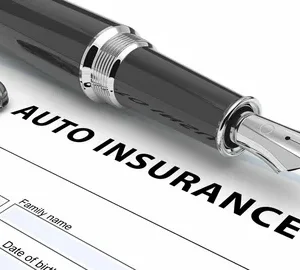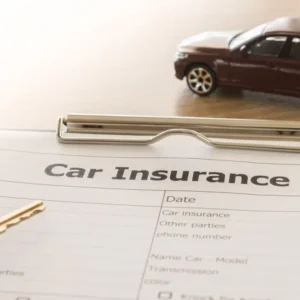Why Modified Car Insurance Is So Expensive
You’ve spent hours turning your ride into a rolling masterpiece—upgraded exhaust, sleek spoilers, custom paint, even that bass-thumping sound system. Yet, when it comes to insuring your modified car, the sticker shock can be brutal. Modified car insurance premiums often run significantly higher than for stock vehicles, leaving many enthusiasts scratching their heads. Below, we unpack the key dynamics behind this cost—and why insurers charge a premium for every bolt you tweak.
1. Increased Vehicle Value
Aftermarket parts and custom work rarely come cheap. When you upgrade to high-performance brakes, a turbocharger, or bespoke interior, you’re boosting your car’s replacement cost. Since insurers calculate premiums based on the total insured value, your higher-value mods translate directly into higher premiums. Repairs or total-loss settlements on a custom ride can be significantly more expensive than on a factory model, and insurers pass that risk on to you. For more on how insurers view modified parts, see MarketWatch’s analysis of modified car coverage (MarketWatch).
2. Elevated Repair and Replacement Costs
Factory parts are standardized, stocked, and often covered by warranties. Aftermarket components, however, can be exotic or sourced from specialty shops, which drives up labor and parts costs. Body shops may need to custom-fit or fabricate parts, leading to longer repair times—and higher bills. When an insurer anticipates a costly repair, premiums rise accordingly. Insights from Insurify note that “repairing or replacing modified parts is typically more expensive,” a factor that underpins higher rates (Insurify).
3. Increased Theft Risk
Many modifications—especially high-end audio systems, alloy wheels, or performance chips—are magnets for thieves. A car with specialty rims or a race-style hood scoop can attract unwanted attention, prompting insurers to hike premiums to cover the elevated theft risk. According to GoAuto Insurance, “Some modifications put a vehicle at an increased risk of being stolen. This increased risk means higher premiums for drivers” (GoAuto Insurance).
4. Greater Accident Liability
Performance-enhancing mods—think turbochargers, engine remaps, lowered suspensions—boost speed and agility but can also increase accident likelihood. Insurers view a souped-up engine and lowered ride height as indicators of a driver prone to pushing limits. That perceived rise in at-fault claims translates into premium surcharges. As Adrian Flux’s guide explains, “Performance modifications can make vehicles more dangerous and increase the risk of being involved in an accident” (Adrian Flux).
5. Limited Insurer Competition
Not all carriers specialize in modified vehicles. Many mainstream insurers shy away from custom rides or require extensive declarations and photos before quoting. This limited competition keeps premiums high, as fewer insurers chase specialty business. The need for bespoke underwriting—complete with appraisal of mods—adds administrative costs insurers must recoup.
6. Potential Warranty and Legal Issues
Some modifications can void factory warranties or run afoul of emissions and safety regulations. Insurers must underwrite potential liability for non-compliant or untested aftermarket parts, which can lead to even higher costs. Buyers might also face fines or repair orders if mods aren’t street-legal, compounding the financial risk.
7 Smart Ways to Reduce Modified Car Insurance in 2025
While the factors above may feel out of your control, there are strategic moves you can make to rein in costs without reverting to a bone-stock ride. Here are 7 smart strategies to lower your modified car insurance premiums in 2025.
1. Shop Around and Compare Quotes Regularly
Insurance premiums can vary wildly from one carrier to another—especially for modified vehicles. Rather than renewing automatically, collect quotes from multiple insurers each year. Use specialty brokers who focus on performance or classic-car coverage; they often have access to niche markets and can offer competitive rates.
- Tip: Aggregate services like Compare+ or Money Saving Expert can streamline the process.
- Benefit: You may uncover a 10–20% savings simply by switching carriers.
2. Increase Your Deductible
Opting for a higher deductible means you shoulder more of the repair cost if you file a claim, but your annual premium drops. Carefully balance the deductible with your emergency savings—only choose this strategy if you can cover the out-of-pocket cost in case of an accident.
- Example: Raising a deductible from $500 to $1,000 can lower premiums by up to 15%.
3. Bundle Policies
Many insurers offer multi-policy discounts when you purchase auto, home, or other lines together. If your insurer covers both your modded ride and your residence, you’re likely to see a discount of 10–25% across renewal quotes.
- Insider Tip: Ask about adding other family members or additional vehicles to maximize the bundle savings.
4. Declare Only Worthwhile Modifications
Some cosmetic mods (like custom lighting) have minimal impact on risk. Others, like aftermarket turbochargers, trigger steep surcharges. Before declaring every bolt-on, evaluate whether each mod materially increases value or risk—some insurers allow omission of purely aesthetic changes without penalty, as long as they’re non-structural.
- Strategy: Group minor cosmetic mods into a blanket “accessories” category if your insurer permits, rather than itemizing each piece.
5. Install Approved Safety and Anti-Theft Devices
Adding features like alarm systems, tracking devices, and performance monitors can offset risk in insurers’ eyes. Many carriers offer discounts of 5–15% for vehicles equipped with:
- GPS tracking
- Engine immobilizers
- Certified roll cages (for track cars)
- High-quality alarm systems
For more details on safety discounts, see Bankrate’s roundup (Bankrate).
6. Leverage Telematics and Pay-Per-Mile Programs
If you’re a safe driver or low-mileage enthusiast, telematics (black-box) programs can reward you with usage-based discounts. Pay-per-mile insurance also exists for drivers who rack up fewer miles annually—ideal if your modded car is a weekend toy rather than a daily commuter.
- Savings Potential: Safe-driving discounts can reach 30% after six months of good performance data.
7. Maintain an Exemplary Driving Record
This one may seem obvious, but it’s the most powerful lever insurers have for determining rates. Every at-fault accident or moving violation can spike your premium by 20–40%. In contrast:
- Defensive driving courses can shave off points.
- Good-student discounts apply if you’re enrolled in higher education.
- Loyalty discounts reward multi-year, claim-free tenures.
Comparison: Premium Impact by Modification Type
To illustrate the relative cost of different mods, consider the table below. These figures represent average premium increases cited across several carriers:
| Modification Type | Average Premium Increase | Key Driver |
|---|---|---|
| Performance Upgrades | 15% | Increased accident liability |
| Cosmetic Alterations | 10% | Higher repair costs |
| Theft-Prone Additions | 20% | Elevated theft risk |
| Side Skirting | 23% | Damage/claims risk (e.g. curbs) |
| Engine Remap | 18% | Performance liability & wear |
| Audio System Upgrade | 12% | Attractive to thieves |
Sources: GoAuto Insurance on theft risk (GoAuto Insurance); The Sun on side skirting costs (The Irish Sun).
Key Insights and Implications
- Risk Versus Reward
While mods enhance performance and aesthetic appeal, they inherently escalate risk—and insurers adjust premiums to match. Every bolt you swap should be weighed against potential insurance surcharges. - Selective Modifications
Not all mods are created equal. Prioritize those with minimal insurance impact (cosmetic wraps, interior lighting) over high-liability changes (turbo kits, suspension lowers). - Long-Term Cost Planning
Enthusiasts often underestimate total cost of ownership. Factor insurance, maintenance, and potential resale value into your mod budget to avoid unexpected financial pain. - Regulatory Awareness
Emissions and safety compliance vary by region. Always verify local laws before installing performance-enhancing parts to avoid fines and forced removal.
Conclusion
Modified car insurance may feel like a steep price to pay for personalizing your ride—but understanding the driving factors empowers you to make smarter choices. By selectively declaring mods, bundling policies, leveraging discounts, and maintaining a spotless driving record, you can meaningfully reduce premiums without sacrificing the thrill of a custom build.
Ready to save? Start by gathering quotes today, secure those safety upgrades, and invest in a telematics device. Your wallet—and your car—will thank you.
Enjoyed this guide? Share your own modding experiences or money-saving tips in the comments below!






